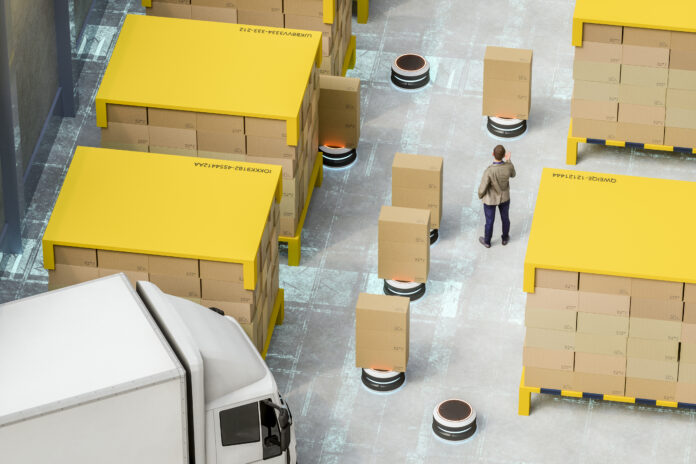
Picture this: a warehouse robot is speeding toward a stacked pallet when someone steps into its path. The robot has two choices. It can stream video frames to a distant cloud server, wait a half‑second for a verdict, then hit the brakes—or it can decide locally, in a blink, and stop before anyone gets hurt. That split‑second difference is where edge AI lives.
For years the cloud handled almost every AI task, and we treated “send now, analyze later” as gospel. But the business world has hit a wall of moments—safety decisions, fraud checks, split‑second recommendations—where round‑trips to the cloud are just too slow, too costly, or too risky. Edge AI flips the script by moving intelligence out of far‑off data centers and onto the devices that capture the data in the first place, delivering action in real time.
Why edge AI is reaching an inflection point in 2025
Three forces are converging to pull inference closer to the point of data creation. First, the economics are finally favorable: purpose‑built edge chips now deliver trillions of operations per second for a few dollars and sip only a handful of watts. Reports show the edge‑AI hardware market passing ten billion dollars in revenue next year and growing at more than 30 percent annually through 2034, suggesting that silicon makers see a long runway of demand.
Second, enterprises are under new regulatory pressure to keep sensitive information on‑prem. A retailer scanning in‑store video for shopper heat maps may collect imagery that counts as personal data under GDPR. Processing it inside the store and discarding the raw frames before anything leaves the building is a cleaner compliance story than streaming it to a hyperscale cloud.
Third, the sheer volume of machine data is exploding. Sending every byte of high‑definition video or sensor telemetry across pricey WAN links no longer scales. That economic reality shows up in market forecasts as well: researchers predict the broader edge‑AI software and services sector will top thirty billion dollars in 2025, up from roughly twenty‑four billion this year, a twenty‑five‑percent jump in just twelve months.
From theory to practice: where enterprises are already winning
Retailers pioneered one of the most relatable edge‑AI use cases—computer‑vision “shelf scanning.” Small cameras mounted above aisles run vision models that recognize empty slots, misplaced items, or pricing errors the moment they happen. Because the decision is made inside the store, staff can restock before shoppers notice a problem, driving a one‑to‑two‑percent lift in revenue according to multiple field trials published by Intel’s retail community.
In manufacturing, plant operators bolt vibration sensors to critical bearings and run tiny predictive‑maintenance models on a nearby industrial gateway. When the pattern shifts from “normal hum” to “likely failure,” the gateway pings the maintenance team immediately—reducing unplanned downtime by as much as thirty percent and preventing a bad bearing from destroying an entire production line.
Warehouses are another proving ground. Autonomous mobile robots used to rely on a remote server farm for path planning; today most perception and obstacle‑avoidance logic runs on a credit‑card‑sized module on the robot itself. By cutting latency to microseconds, fleets move fluidly through cramped aisles instead of stopping in traffic jams, driving measurable throughput gains during peak season.
Cyber‑security teams, meanwhile, place light‑weight anomaly‑detection agents at branch offices so that local traffic never reaches the corporate SOC unless it looks suspicious. SOC analysts see ten times fewer false positives, freeing them to investigate real threats instead of chasing phantom alarms.
Even customer‑facing mobile apps are drifting to the edge. Compressed large‑language‑model variants now fit on modern smartphones, letting a travel‑booking app summarize itineraries or translate menus entirely offline. The payoff is a snappier experience and a lower cloud bill—plus fewer legal headaches when personal data stays on the device.
Obstacles to plan for
Edge brings its own challenges. Hardware diversity is the obvious one: a smart camera, a gateway PC, and a ruggedized tablet each use different chips and toolchains. Enterprises tame that complexity by standardizing on a small set of vendor ecosystems—NVIDIA Jetson for heavy vision workloads, Qualcomm’s RB‑series for battery‑powered devices, or Intel Movidius for PCIe add‑in cards—and insisting that every project team live within that catalog.
Operational visibility is the next hurdle. An edge node is effectively a tiny data center with no on‑site admin. If you cannot push software patches, rotate certificates, monitor GPU temperatures, and roll back a buggy model automatically, your pilot will stall at a dozen devices. The answer is treating edge endpoints as first‑class citizens in your DevOps pipeline, not as science‑fair projects.
Model sizing also matters. Compressing a 1‑billion‑parameter vision model into something that fits on a 4‑gigabyte GPU may require quantization—trading floating‑point precision for eight‑bit integers—or knowledge distillation, where a smaller “student” model learns the most useful behaviors from a larger “teacher.” The good news is that modern toolkits handle most of the mathematics behind the scenes, so your data‑science team focuses on accuracy, not bit‑shaving.
Finally, governance rules cannot stop at the data‑center door. The same AI‑ethics policies you built for the cloud—explainability, bias testing, audit logging—must travel to the edge as well. A smart‑camera that can’t document why it denied entry to a visitor could expose the company to legal claims no less serious than a mis‑classifying cloud service would.
A pragmatic roadmap for the first ninety days
Successful adopters follow a playbook. Week one: build a cross‑functional squad that blends IT, operations, cyber‑security, and a line‑of‑business champion who owns a real pain point. By week four that team has chosen a single latency‑critical use case—empty shelves, mis‑picked cartons, or false fire‑alarm triggers—along with a crisp metric and an ROI threshold.
Weeks five through eight revolve around a “golden path” prototype: one device, one model, automated updates, and a fallback to a cloud API if the model fails. This is where many pilots die; resist the urge to scale until the automation works. During weeks nine through twelve the group measures results, compares cost curves, and writes a go‑or‑no‑go memo for a broader rollout. Companies that complete this cycle often see the business unit requesting more edge projects instead of IT pushing them from above.
Measuring success beyond simple latency wins
Edge AI almost always starts with a speed argument—do the same thing faster. Mature programs, however, discover secondary benefits. One large grocery chain that deployed edge‑AI shelf monitoring noticed a side effect: because the cameras captured real‑time planogram compliance, category managers finally had hard data to renegotiate slotting fees with suppliers. What began as a restocking play morphed into a margin play, more than paying for the project. Another manufacturer saw defect‑detection cameras generate a trove of labeled images the data‑science team could reuse to train improved quality‑prediction models for other plants, accelerating downstream projects.
When you design key performance indicators, include both the obvious latency or downtime number and a placeholder for spillover gains in revenue, customer experience, or regulatory posture. Having room to capture unexpected value keeps executive enthusiasm high when the first wave of wins plateaus.
Looking ahead: where edge AI goes next
Analysts predict that by 2027, half of all enterprise‑generated data will be created and processed outside centralized data centers, up from roughly ten percent today. The long‑term implication is that edge and cloud will behave like a nervous system: fast reflexes in local “spinal cord” nodes and deeper analysis in the centralized “brain.” Businesses able to orchestrate models across that spectrum—choosing dynamically whether an inference lives on a sensor, a gateway, or a regionally distributed micro‑data‑center—will unlock entirely new classes of application, from self‑optimizing factories to hyper‑personalized in‑store experiences. The global hardware totals hint at that future: researchers see unit shipments of edge‑AI accelerators doubling roughly every three years through 2030.
The takeaway for stakeholders
Edge AI is no longer an exotic R&D concept. It is an architectural shift already producing measurable gains in throughput, compliance, and customer experience across industries. Your job as a stakeholder isn’t to memorize convolutional‑neural‑network math; it’s to spot the workflows where every second—or every megabyte—matters, give a small team permission to run a tightly scoped pilot, and insist on disciplined operations from day one. Treat the edge as a partner to the cloud, not a rival, and you will position your organization to act on data the moment the data exists—turning insight into advantage while competitors are still waiting for packets to come back from halfway across the country.
If you’d like a deeper dive into vendor selection, model‑compression strategies, or proof‑of‑concept budgeting, reach out. The edge is closer than you think.




